Regardless of the economic pressures that continue to affect the nation, people are still drinking wine. And the convenience sector hasn’t failed to benefit from this.
“Our wine sales have been very strong in the past few months thankfully, people are still drinking!” says Jimmy Dhaliwal, who runs a Bargain Booze in Atherstone, Warwickshire.
Wine in the impulse sector is worth just over £1bn, which is a rise of 1.5% over the past year, according to Nielsen (year to March 19, 2011). This slight growth has been driven by rising prices within the sector as volume sales are down by 5.1%.
Retailer’s view
“We’ve been having a whale of a time thanks to the run of good weather recently, particularly on sales of rosé and Champagne. Sales of rosé have been growing for a while, but it’s from a small base.
“We’ve got our chillers crammed full as best we can at the moment they are choc-a-block with rosé and white wines, as well as sparkling options.
“People are looking for light and fresh wines that might suit the barbecue occasion, even when it comes to red wines. The heavier and more full-bodied wines don’t sell so well through the summer months, but we do well on them around the Christmas season.
“Shoppers are also doing their best to seek out good prices when it comes to their wine shopping, so we have been doing well with sales of any wines on offer.
“We have a lot of offers on wine, and people like that.
“We had Lanson Black Label and some other Champagnes on offer over the Easter and Royal Wedding Bank holiday periods, and they sold really well. Australian, Californian and South African wines have been selling well but French wines are still a much harder sell.”
Mike Howe, Londis, Clyst St Mary, Devon
“The only price bands to be showing any growth in volume are those over £6,” explains Dan Townsend, general manager UK & Ireland at Treasury Wine Estates. He notes that this indicates a clear shift towards premiumisation in the impulse sector.
This growth in sales of wine at higher price points is partly down to the fact that more people are choosing to entertain at home to save money on going out. For many people, therefore, these purchases will be made at the last minute.
“Our research shows that 85% of purchases made after 5pm are for immediate consumption,” says Townsend.
This is backed up by HIM data from 2010, which found that 91% of wine purchased from convenience stores was for same-day consumption, with 36% bought to be drunk in the next two hours.
Most convenience retailers have responded to this demand by installing as many chiller cabinets as possible to cater for impulse purchases. But getting the right range of wine remains critical, and independent stores “need to continually assess their stock and consider how they can refresh their range to meet ever-changing consumer trends and tastes,” according to Continental Wine & Food (CWF) marketing manager Vicky Lee.
Chiller cabinets are a definite necessity for convenience stores as rosé continues to be one of the big winners in wine.
Jimmy Dhaliwal reports that rosé has been “flying out the door”, especially since the start of April, when sales have been up 11%. “We have a good selection of about 35 to 40 rosés and they are all refrigerated,” he says.
Rosé is currently outperforming both red and white wine, and it’s a trend that seems to show no sign of slowing. McGuigan UK & Europe general manager for Australian vintage, Paul Schaafsma, says: “The latest figures predict that rosé is to continue to grow, at more than 47% over the next five years.”
The trend is being driven to a large extent by younger, female consumers who are looking for RTD alternatives.
Treasury Wine Estates is one company which has launched a rosé recently with the aim of specifically targeting this age group. Bella Vie, a White Zinfandel, is being launched exclusively into the impulse sector.
“Bella Vie will ensure that the independent channel can capitalise on the growth within the rosé wine market,” explains senior brand manager Rachel Hawes.
Chilled wine
It’s not just white and sparkling wines that can offer refreshment during the summer. Gallo hit the headlines earlier this year when it launched its Gallo Family Vineyards Summer Red, designed to be enjoyed chilled. “This innovative style of red wine will be a key addition to chilled beverage sections across the convenience sector this year,” says Gallo channel controller for UK impulse, David Mallory. “We anticipate it will take the UK by storm this summer.”
Jimmy Dhaliwal, who runs a Bargain Booze in Atherstone, Warwickshire, says he has already been stocking the Gallo variant in his store, but so far people have been a bit hesitant about buying it.
“It’s just about educating people,” he explains. “People have grown up believing you should never chill a red wine, but it’s about letting them know this is fruitier and lighter. We have stocked it among the rosés in the chiller cabinets and we’ve had to make a big feature of it otherwise people would be confused to find it there.”
He is keen to see what uptake the wine will have over the summer months, but he also points out that if chilled red wine does become more popular, it could cause problems for many convenience stores.
“We can’t squeeze any more chillers into the store,” he points out. Many in the industry believe, though, that this is a trend that could appeal to some consumers. Continental Wine & Food marketing manager Vicky Lee says: “We are seeing a new trend emerging where many red wines are being served at a cool and even chilled temperature.”
Lee at CWF says that female rosé fans are seeking out appealing New World wines with red berry fruit flavours. “You can’t go wrong with a couple of entry-level options such as Californian Zinfandel rosé or a slightly drier but still fruity Pinot Grigio blush from Italy,” she says.
Much of the growth in rosé is being driven by New World rosé wines such as White Zinfandel from California, confirms Clare Griffiths, vice-president European marketing for Constellation Wines Australia and Europe. “Store owners should be sure to stock New World rosé varietals from brands that consumers trust, such as Echo Falls and Hardys,” she says.
A company that has already found success with Californian rosé is E&J Gallo Winery, and it has also recently launched a new rosé. Its Gallo Family Vineyards Merlot rosé joined the portfolio in April, sitting alongside existing rosés White Grenache and White Zinfandel.
“Rosé is the perfect vehicle for introducing new consumers to the wine category as a whole as it is fruity, refreshing and a lighter style,” says Gallo channel controller for UK impulse, David Mallory. “Retailers should highlight to consumers the versatility of rosé as a wine style it can be served over ice, or combined with other ingredients to form a range of exciting cocktails.”
Meanwhile, producer Percy Fox says its Blossom Hill brand has also been recording good rosé sales. Brand manager Joanne Morgan says rosé sales grew 17% following the £1m Wimbledon ‘Summer Perfectly Served’ campaign (Nielsen, year to October 2, 2010).
The demand for rosé reflects an interest in wines that are generally less robust and lighter in style.
Italian wines have been doing well within the off-trade, with much of the growth coming from Pinot Grigio wines, which fit this lighter-taste profile.
“Consumers are also increasingly seeking out lighter, fresher and more aromatic varietals and this is reflected in the increased popularity of Jacob’s Creek Pinot Grigio and Sauvignon Blanc and also Jacob’s Creek Three Vines Semillon Sauvignon Black Viognier,” says Pernod Ricard UK commercial director for wines, Lee James. “Again these are key areas that convenience retailers should be addressing.”
And Australian producers have been working to offer less hard-hitting wines, to meet consumer demand. Treasury Wine Estates’ Townsend reports good sales for its Australian brands Rosemount and Lindeman’s and he says both have just launched social media campaigns to enable them to engage more with core consumers.
Wine with food
Consumers are choosing to save money by entertaining at home, says Treasury Wine Estate general manager UK & Ireland Dan Townsend. “People are opting to host dinner parties rather than going out to restaurants,” he explains. “They are increasingly looking towards wine as the product which can ensure these events maintain a special feel, especially given its ability to enhance any meal through a strong wine-food match.”
Half of those buying wine in symbol stores say they’d consider buying wine with a meal deal if it was offered, according to 2010 research by HIM.
Blossom Hill’s brand manager Joanne Morgan says: “This suggests there is a role for meal deals within c-stores to prompt shoppers to consider wine as part of planning a meal.”
New Zealand wine, which often commands a higher price than other wine, is regularly consumed at home with food, according to Pernod Ricard UK commercial director for wines, Lee James. “The off-trade can make the most of customer engagement through food and drink matching to help differentiate wine styles and suggest trade-up options,” he says.
Continental Wine & Food marketing manager Vicky Lee also stresses that c-store operators should think about the idea of ‘enjoying wine with food’, because “it allows the potential for cross-promotion and themed food and drink displays”.
Meanwhile, Constellation says its Hardys Australian wine brand continues to attract consumers via its marketing activity, including sponsorship of Channel 4’s Come Dine With Me.
“Lindeman’s has launched the first ever online wine and book club,” he notes. “The site contains book reviews, literary news, prizes and a range of exclusive wine content.” The campaign’s micro-website is supported by social media including Facebook, Twitter and YouTube.
In the impulse sector, sales of Australian wines are up by 2.4% in value terms, which is greater than the overall growth figure of 1% in the total wine market, according to Nielsen data.
“There is continued consumer demand for a new style of Australian wine, moving away from the over-use of oak, high alcohol and blockbuster reds to more elegant, refined and sophisticated styles,” says McGuigan’s Schaafsma.
The convenience sector is a definite area of focus for McGuigan, according to Schaafsma. “Recent initiatives include repackaging the McGuigan Black Label range to give greater standout and shelf appeal as well as increasing the number of wines in the range to 11 through the addition of a sparkling rosé.” Further plans include the launch of McGuigan Expression, a premium selection of regional wines available exclusively to the convenience sector.
With consumers opting for lighter styles of wine in general, producers have also seen a demand for wines that offer a lower alcoholic content.
Constellation tapped into this trend earlier this year with the launch of a Moscato wine with an abv of just 5.5%.
“With the lower alcohol wine market showing a significant year-on-year growth of 83%, we believe that this new range will further increase sales,” says Constellation’s Griffiths.
And Jimmy Dhaliwal says he has also seen an increase in sales of lower alcohol wines at his Bargain Booze store, those between 5% and 7% abv. “The wines are more refreshing and we can also offer them as ‘three for £10’ because the alcohol duty is not as high as with the higher strength wines, so we can afford to be more competitive. I never thought they would sell, but consumers do seem to want these wines.”
CWF’s Lee notes that the demand for low-alcohol drinks during the summer can be especially high, “particularly when consumers have planned all-day events at home such as a barbecues and want to keep a watchful eye on alcohol consumption”.
But Treasury’s Schaafsma says that although the demand for lower alcohol wines is a significant trend, people are not always going as low as 5% abv. As a result, the overall market is experiencing more sales of wines that are around 11% to 12.5% abv, which is “still far removed from the hefty 15% wines of the past”.
Sparkling wine is also on the up, experiencing a 4.5% increase in value sales over the past year, figures which show it is outperforming still wine, according to Nielsen data.
“The product is increasingly being seen as an attractive and cost-effective alternative to Champagne,” says Treasury’s Townsend. “Retailers should be sure to stock a range of premium sparkling wines, such as Wolf Blass Yellow Label Sparkling.”
Producer McGuigan is also confident of the category’s success and as such has added new sparkling lines across its portfolio, including a Sparkling Shiraz rosé and a Blanc de Blanc in its premium Tempus Two range.
Schaafsma notes that due to continued economic uncertainty the company “has seen a trend towards more affordable, quality sparkling wine from Australia, New Zealand, Spain and, of course, Prosecco from Italy”.
Meanwhile, Pernod’s Jacob’s Creek has joined forces with BBC Saturday Kitchen wine experts Peter Richards and Susie Barrie to produce a guide to fizz called A Taste of Sparkling.
The guide covers everything with fizz, from Asti to Champagne, and it helps consumers make sense of sparkling wine, from how to open the bottle correctly, to which sparkling wines go best with different foods.
ones to watch…
Blushing bella
Treasury Wine Estates has launched Bella Vie, which is aimed at 20-something women looking for an alternative to RTDs. The White Zinfandel rosé wine, which is sourced from Italy, is said to have a sweeter taste than other rosés. It is available exclusively through impulse retailers. The launch will be backed by a £250,000 marketing campaign.
tel: 020 8843 8400
Spring Blossom
A new range of premium blended wines from Blossom Hill has just arrived in stores. The Vineyard Collection consists of a white blend, described as ‘aromatic and delicate’, and a smooth red blend. The range is designed to suit special occasions. “This new range builds on the success of fruit-led blended wines from Blossom Hill,” says brand manager Joanne Morgan.
tel: 0845 6014558
Family affair
Gallo Family Vineyards Summer Red is a softer, fruitier and sweeter wine which has been developed to specifically appeal to the thousands of wine drinkers who find conventional red wine styles too heavy and tannic, especially in the warmer months, says Gallo channel controller for impulse, David Mallory. The wine is recommended served chilled.
tel: 01895 813444
Perfect timing
New Banrock Station Moscato and Pink Moscato have just 5.5% abv with less than one unit per 125ml serving. “Moscato is already the third fastest growing varietal in bottled white wine in Australia, so this really is the perfect time to bring the range to the UK,” says Clare Griffiths, vice-president European marketing for Australian and European wines.
tel: 01483 690000





![Muller_Bliss_Whipped_Elevated_Lemon_Meringue_Pie_FF[87]](https://d2dyh47stel7w4.cloudfront.net/Pictures/274x183/2/2/2/352222_muller_bliss_whipped_elevated_lemon_meringue_pie_ff87_462652_crop.jpg)
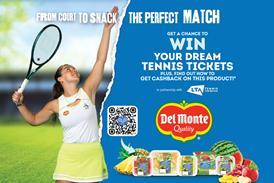

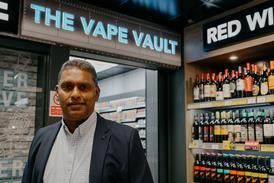











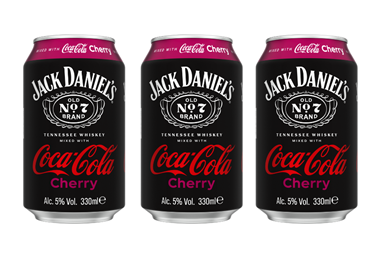
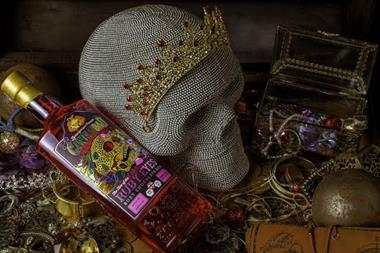

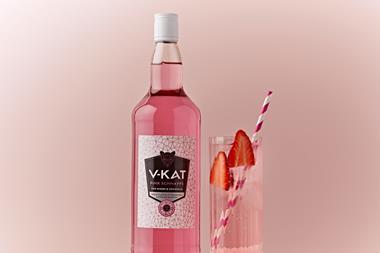
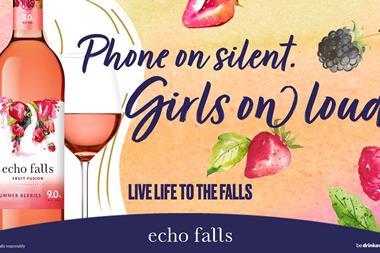
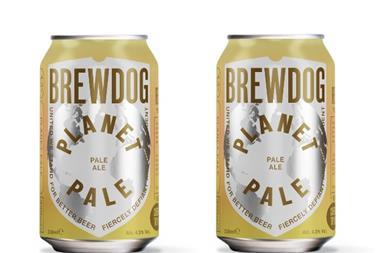

No comments yet